New dietary guidelines came out in January, and it’s no shock that the recommendations continue to be that we eat too much salt. The upper limit of the recommendation is to consume 2300mg of sodium daily, but if possible, less is better. Our bodies only need 500mg to carry out body functions like muscle contractions and nerve transmissions.
But measuring in milligrams feels hypothetical, and minimizes the extent to which we can understand how much salt we’re really consuming. 2300mg is actually equivalent to 1 teaspoon. We’re only allotted 1 teaspoon of salt a day.
One standard teaspoon featured in every picture represents the recommended sodium intake per day (2300 mg), and the spoon next to it represents how much sodium is in a serving of that food. It may be surprising to see how little salt our body should actually take in, and how much salt is in a lot of foods unexpectedly.
Bagels
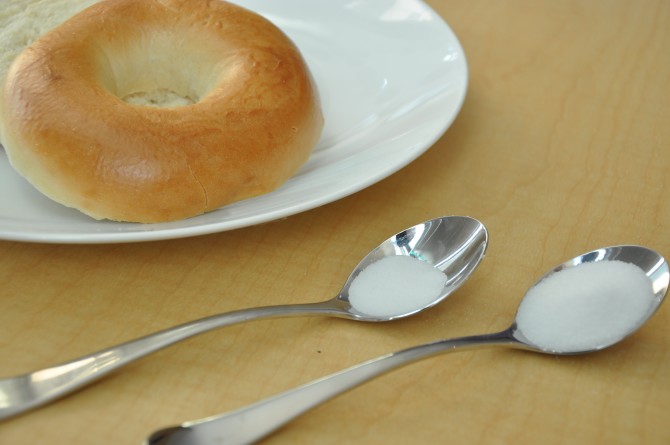
Photo by Rachel Hartman
A bagel on average has a salt content of 490mg. That’s a little over 20 percent of the daily limit on the bagel itself. Keep in mind, this doesn’t included your schmear of choice.
Breakfast Cereals
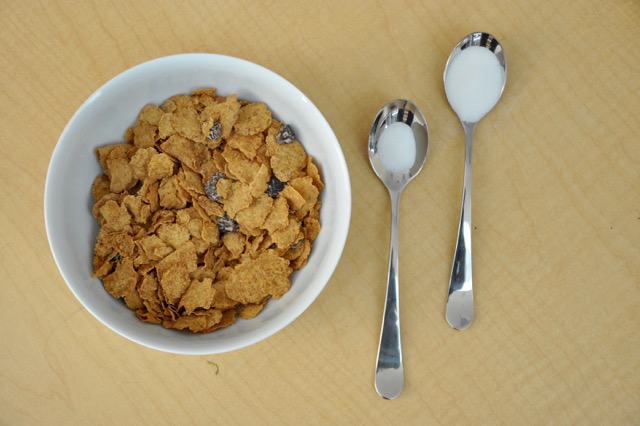
Photo by Rachel Hartman
Although we commonly think of Raisin Bran as being sugary (but not even that much tastier than cardboard), there’s actually a good amount of salt hidden in there. Like a lot of breakfast cereals, the salt content in a standard bowl of cereal is close to 20 percent of the daily recommended amount.
Deli Meat
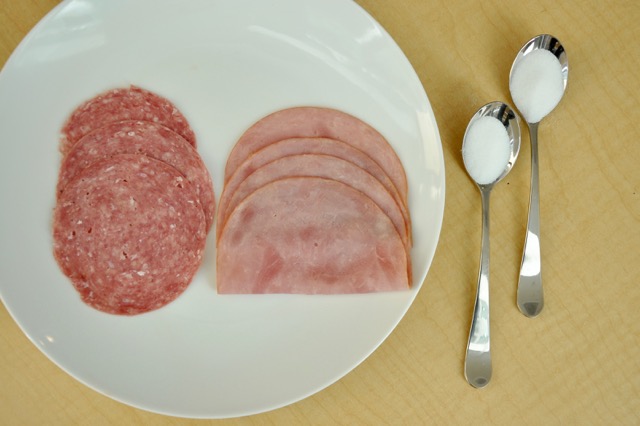
Photo by Rachel Hartman
Depending on the meat, the sodium content can vary, but a lot of sodium is added not as salt, but as preservatives like sodium nitrate. Deli meat alone makes up for about 70 percent of most people’s sodium intake, with around 400mg of sodium in each slice of meat.
Canned Soups
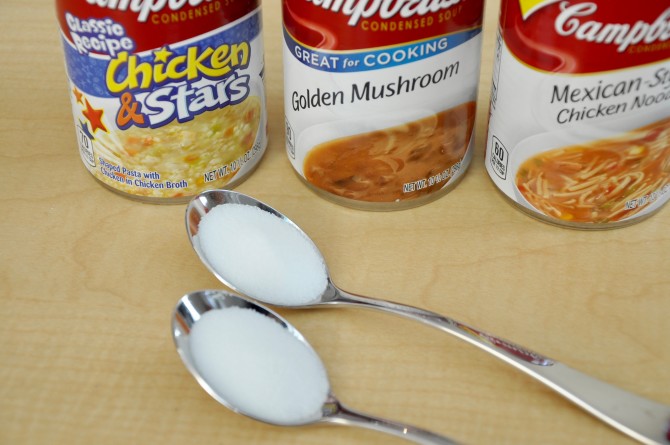
Photo by Rachel Hartman
Looking for low sodium alternatives or whipping up your grandma’s chicken noodle soup recipe may save you a huge chunk of sodium. Canned soups are generally packed with salt, potentially containing up to half of the daily recommendation in just a 1/2 cup serving (there are 2.5 servings in each can).
Ketchup
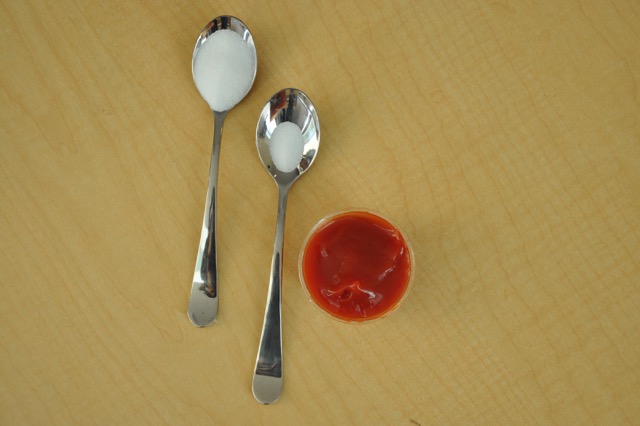
Photo by Rachel Hartman
Surprisingly enough, just 1 tablespoon of ketchup has 190mg of sodium, which is 16 percent of the daily recommendation. And that’s not to account for whatever the ketchup is being put on or dipped into: probably some salty french fries or grilled cheese.
Sliced Bread
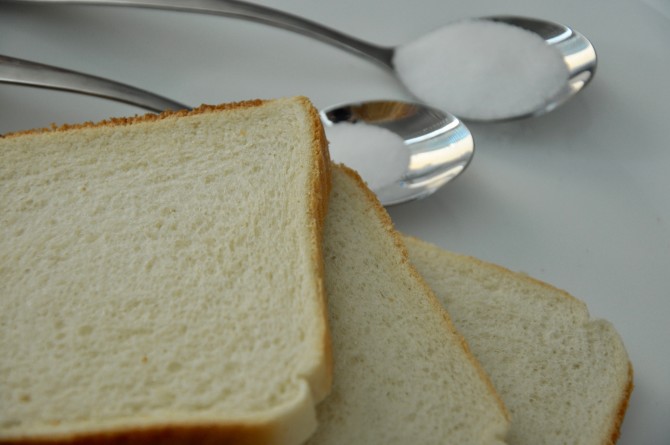
Photo by Rachel Hartman
Speaking of grilled cheese, sliced bread contains a good amount of sodium as well. One slice of white bread, depending on the brand, can contain between 80 to 230mg of sodium.
Spaghetti Sauce
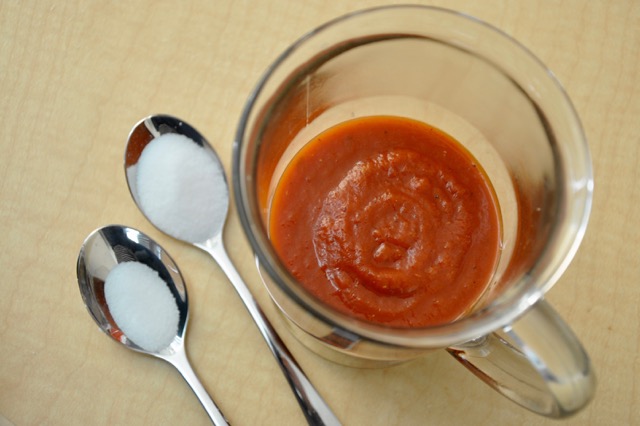
Photo by Rachel Hartman
Some brands contain very little sodium, but others can contain around 500mg of sodium for 1/2 cup of sauce, which isn’t nearly enough sauce to realistically cover a serving of pasta. Check for low-sodium versions or brands that are normally low on sodium content.
Dairy Products
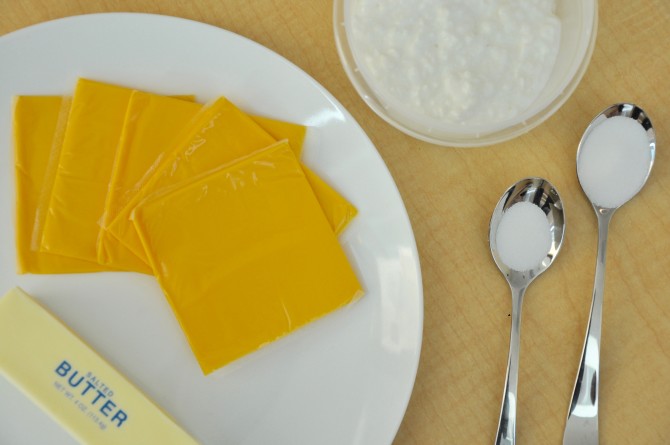
Photo by Rachel Hartman
Butter, cheese and even milk contain sodium. 1 slice of American cheese has 200mg of sodium, and 1/2 cup of cottage cheese has 360mg.
When it comes down to it, make sure you’re checking the nutrition facts label on foods as you go food shopping, and be cautious of all the hidden sodium in your diet. Checking out some pretty cool recipes and taking a shot at home cooking may help you out, or at least looking at the label and finding alternatives with less sodium. And try not to be salty about it.


